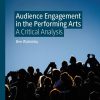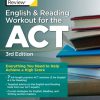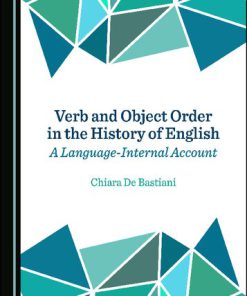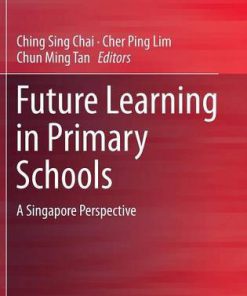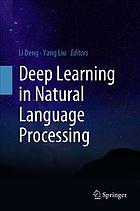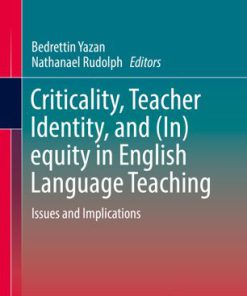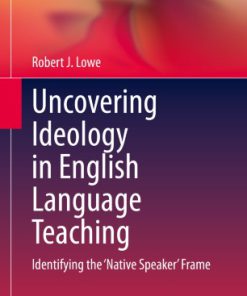The Power of Identity and Ideology in Language Learning 1st Edition by Peter De Costa 9783319302096 3319302094
$50.00 Original price was: $50.00.$25.00Current price is: $25.00.
The Power of Identity and Ideology in Language Learning 1st Edition by Peter De Costa – Ebook PDF Instant Download/Delivery:9783319302096,3319302094
Full download The Power of Identity and Ideology in Language Learning 1st Edition after payment

Product details:
ISBN 10:3319302094
ISBN 13:9783319302096
Author:Peter De Costa
This critical ethnographic school-based case study offers insights on the interaction between ideology and the identity development of individual English language learners in Singapore. Illustrated by case studies of the language learning experiences of five Asian immigrant students in an English-medium school in Singapore, the author examines how the immigrant students negotiated a standard English ideology and their discursive positioning over the course of the school year. Specifically, the study traces how the prevailing standard English ideology interacted in highly complex ways with their being positioned as high academic achievers to ultimately influence their learning of English. This potent combination of language ideologies and circulating ideologies created a designer student immigration complex. By framing this situation as a complex, the study problematizes the power of ideologies in shaping the trajectories and identities of language learners.
The Power of Identity and Ideology in Language Learning 1st Table of contents:
Chapter 1: Foreign Talent and Singapore
1.1 Global Flow of Migrants
1.1.1 Designer Immigration: A Worldwide Phenomenon
1.1.2 Language as a Filtering Tool
1.2 Critically-Oriented Research on Model Minority and Immigrant Youth
1.3 Making the Case for Designer Immigrants
1.4 Overview of the Chapters
References
Chapter 2: Reconceptualizing Language, Language Learning, and the Language Learner in the Age of
2.1 Introduction
2.2 Globalization and Educational Processes
2.3 Poststructuralism and SLA
2.4 Pierre Bourdieu and SLA
2.5 Consequences of Globalization and the Commodification of Languages
2.5.1 Language as Ideology, Semiotic Reconstruction, and Performance
2.5.2 Language Learning Through an Ideology and Identity Lens
2.5.3 Imagined Communities, Social Imaginaries, and Circulating Ideologies
2.5.4 Symbolic Competence and Enregistering the Globalized Language Learner
References
Chapter 3: Researching, Analyzing, and Constructing the Data
3.1 Introduction
3.2 Critical Ethnographic Case Study Research Concerns
3.3 Conducting Ethical Research at Oak Girls’ Secondary School (OGSS)
3.3.1 Gaining Access to Oak Girls’ Secondary School
3.3.2 The School and Its Participants
3.3.3 Designer Immigrant Participants
3.3.4 Situating Myself as a Reflexive Researcher
3.4 Performing a Critical Ethnographic Case Study at Oak
3.4.1 Observing Classroom Interaction
3.4.2 Video-Taped Classroom Interaction
3.4.3 Audio-Taped Classroom Interaction
3.4.4 Observing Interaction Outside of the Classroom
3.4.5 Interviews
3.4.6 Artifacts
3.5 Coding and Analyzing the Data
3.5.1 Coding and Categorization
3.5.2 Transcription of Interaction and Interview Data
3.5.3 Discourse Analysis
3.6 Conclusion
References
Chapter 4: The Sociolinguistic Context of Singapore and Oak
4.1 Introduction
4.2 The Different Languages of Singapore
4.2.1 Singapore’s National Bilingual Policy
4.2.2 English in Singapore: A Tale of Two (Unequal) Englishes
4.3 The Ideology of English Language Standardization
4.3.1 Policing English: The Discourse of Crisis and the Speak Good English Movement
4.3.2 Policing English: The English Language Syllabus and the Singapore School
4.3.3 Class Matters: The Cosmopolitan and Heartlander Divide in Relation to English
4.4 Conclusion
References
Chapter 5: Designer Student Immigration and the Designer Student Immigrant Complex at Oak
5.1 Introduction
5.2 Designer Student Immigration in the Singapore Education System
5.2.1 Two Types of Scholarships
5.2.2 The Designer Immigration Recruitment Process at Oak: Insights from the Ground
5.2.3 Recruiting Designer Immigrant Students in China
5.2.4 Recruiting Designer Immigrant Students in Vietnam
5.2.5 Applying World Systems Analysis to the Oak Context
5.3 Oak: A Cosmopolitan ‘Mecca’
5.3.1 The Benevolent Culture at Oak
5.4 Circulating Ideologies and the Designer Student Immigrant Complex
5.4.1 The “Scholars”
5.4.2 Circulating Ideology #1: Focused and Hardworking Students
5.4.3 Circulating Ideology #2: Better and Brighter Students Than Their Singaporean Classmates
5.5 Bringing Language and Circulating Ideologies Together: The Social Identification of Scholars
5.5.1 Ideologies at Work: Iconization, Recursiveness, and Erasure at Oak
5.6 Conclusion
References
Chapter 6: Language Ideologies at Oak
6.1 Introduction
6.2 The Standard English Language Ideology at Oak
6.2.1 Language Management at Oak
6.3 Linguistic Practices Valued and Denigrated at Oak
6.3.1 Sanctioned Genres: Conforming to the “Right” Organizational Structure
6.3.2 Other Valued Forms of Accuracy
6.4 A Monoglot Standard English Ideology at Oak
6.4.1 Enacting a Monoglot Standard English Ideology: Its Impact on Jenny and Daphne
6.4.2 Jenny
6.4.3 Daphne
6.5 Responding to a Monoglot Standard English Ideology: Learner Investment, Styling, and Semiotic
6.5.1 Jenny’s Investment
6.5.2 Jenny’s Styling and Semiotic Reconstruction
6.5.3 Daphne’s Investment
6.5.4 Daphne’s Styling and Semiotic Reconstruction
6.5.5 Linguistic Negotiations by Daniella, Wendy, and Xandy
6.6 Conclusion
References
Chapter 7: The Designer Student Immigrant Complex: Its Impact on Learning
7.1 Introduction
7.2 Revisiting the Designer Student Immigrant Complex
7.3 The Effects of the Complex on Three Focal Students
7.3.1 Daphne: Countering the Master ‘Scholar’ Narrative
7.3.2 Negotiating Teacher Expectations and Positioning
7.3.3 Negotiating Personal Expectations and Positioning
7.3.4 Negotiating Peer Expectations and Positioning
7.3.5 Daniella
7.3.6 Negotiating Teacher and Peer Expectations and Positioning
7.3.7 Negotiating Personal Expectations and Positioning
7.3.8 Jenny
7.3.9 Harnessing ‘Scholar’ Expectations
7.3.10 Relating the Designer Student Immigrant Complex to Examination Performance
7.4 Conclusion
References
Chapter 8: Looking Back and Moving Forward
8.1 Overview
8.2 Implications of the Study
8.3 Future Directions
People also search for The Power of Identity and Ideology in Language Learning 1st :
the power of identification with christ
the power of identity and ideology in language learning
what is the relationship between identity and ideology
what are the 3 features of ideology
the power of identification with christ
Tags:
Peter De Costa,Power,Ideology,Language,Learning
You may also like…
Uncategorized
Education Studies & Teaching - Teaching - Reading & Language
Education Studies & Teaching - School Education & Teaching
Future Learning in Primary Schools A Singapore Perspective Ching Sing Chai 9812875794 9789812875792
Education Studies & Teaching - School Education & Teaching
Uncategorized
Education Studies & Teaching
Criticality Teacher Identity and In equity in English Language Teaching Bedrettin Yazan
Education Studies & Teaching
Education Studies & Teaching - School Education & Teaching


